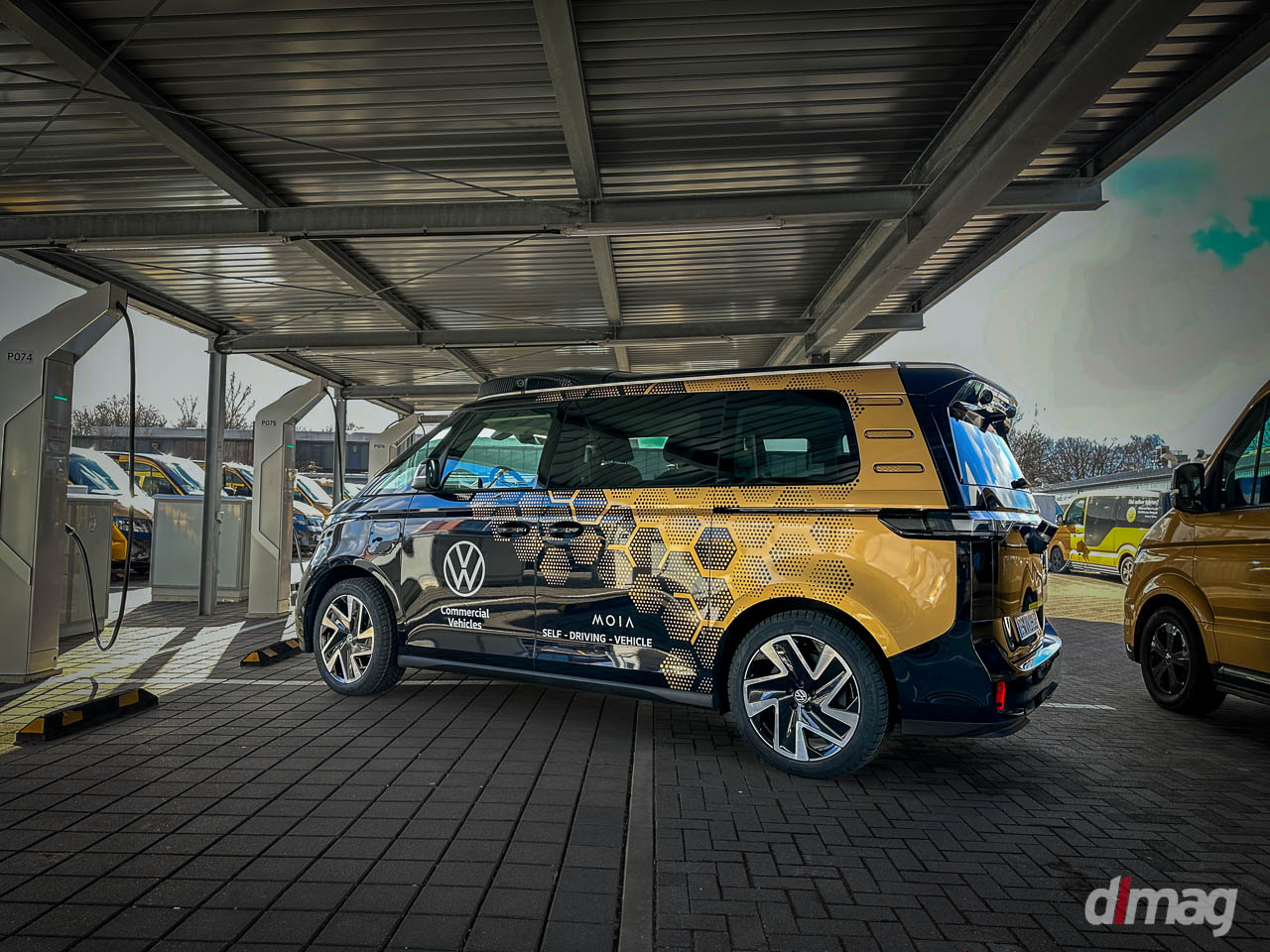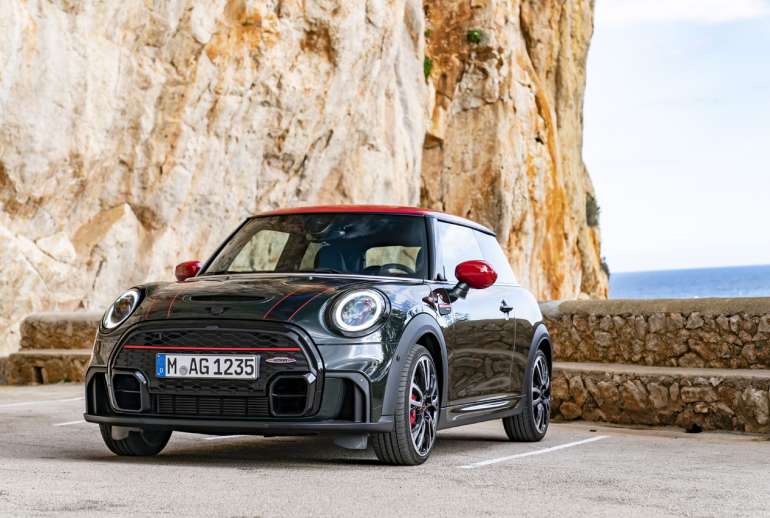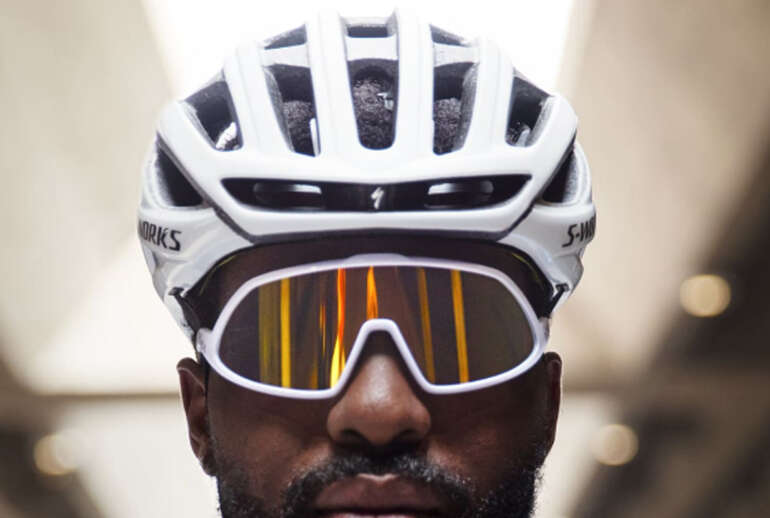Volkswagen is making a serious play for the autonomous vehicle market with its ID.Buzz AD robotaxi, getting ahead of Tesla’s delayed Cybercab while taking on Waymo’s established operations. MOIA, the German automaker’s mobility subsidiary, has put together this Level 4 autonomous vehicle as part of what they’re calling the “MOIA Turnkey Solution.” The announcement shows Volkswagen’s commitment to making autonomous technology work commercially through a complete package that includes the vehicle, software platform, and operational support services.
This approach is different from what competitors are doing because it offers immediate deployment capabilities instead of proprietary closed-loop systems. The vehicle marks an important step in autonomous technology commercialization, connecting prototype testing with actual deployment.
Seeing the Future: My 2023 Visit to MOIA’s Hamburg Facility
Back in 2023, I got to see these vehicles firsthand at MOIA’s Hamburg facility, and the visual impact was immediate. The ID.Buzz AD prototypes on display showed how good design execution can turn utilitarian autonomous technology into something people would want to ride in. The vehicles sat under the facility’s modern charging canopy, creating an interesting contrast between industrial infrastructure and consumer-friendly design.

The livery scheme grabs your attention right away through smart use of geometric patterns that work both aesthetically and functionally. The black base color gives off a professional vibe that says reliability and seriousness, while the hexagonal pattern overlay in contrasting tones creates visual interest without being overwhelming. This geometric design runs across the vehicle’s sides, creating a sense of movement even when parked. The pattern seems to be more than just decoration, potentially serving as a visual cue to other road users and passengers about the vehicle’s autonomous capabilities.
What impressed me most was how the design keeps the ID.Buzz’s naturally friendly character while adding the technological sophistication needed for autonomous operation. The MOIA branding works seamlessly with Volkswagen’s corporate identity, creating a cohesive visual story that speaks to both innovation and reliability. The “SELF-DRIVING VEHICLE” text placement shows careful thought about regulatory requirements while keeping the design integrity intact. The charging infrastructure backdrop highlighted another important aspect of the deployment strategy, where design, technology, and infrastructure need to work together.
How the Sensors Work
The ID.Buzz AD packs a complex sensor setup with 27 individual components spread across the vehicle’s modified frame. This system includes 13 cameras for visual recognition, nine LiDAR units for precise distance measurement and object detection, and five radar sensors for motion tracking and weather-resistant sensing. The complete sensor suite creates what MOIA calls a “redundant 360-degree view” of the vehicle’s surroundings, enabling safe operation in complex urban environments.
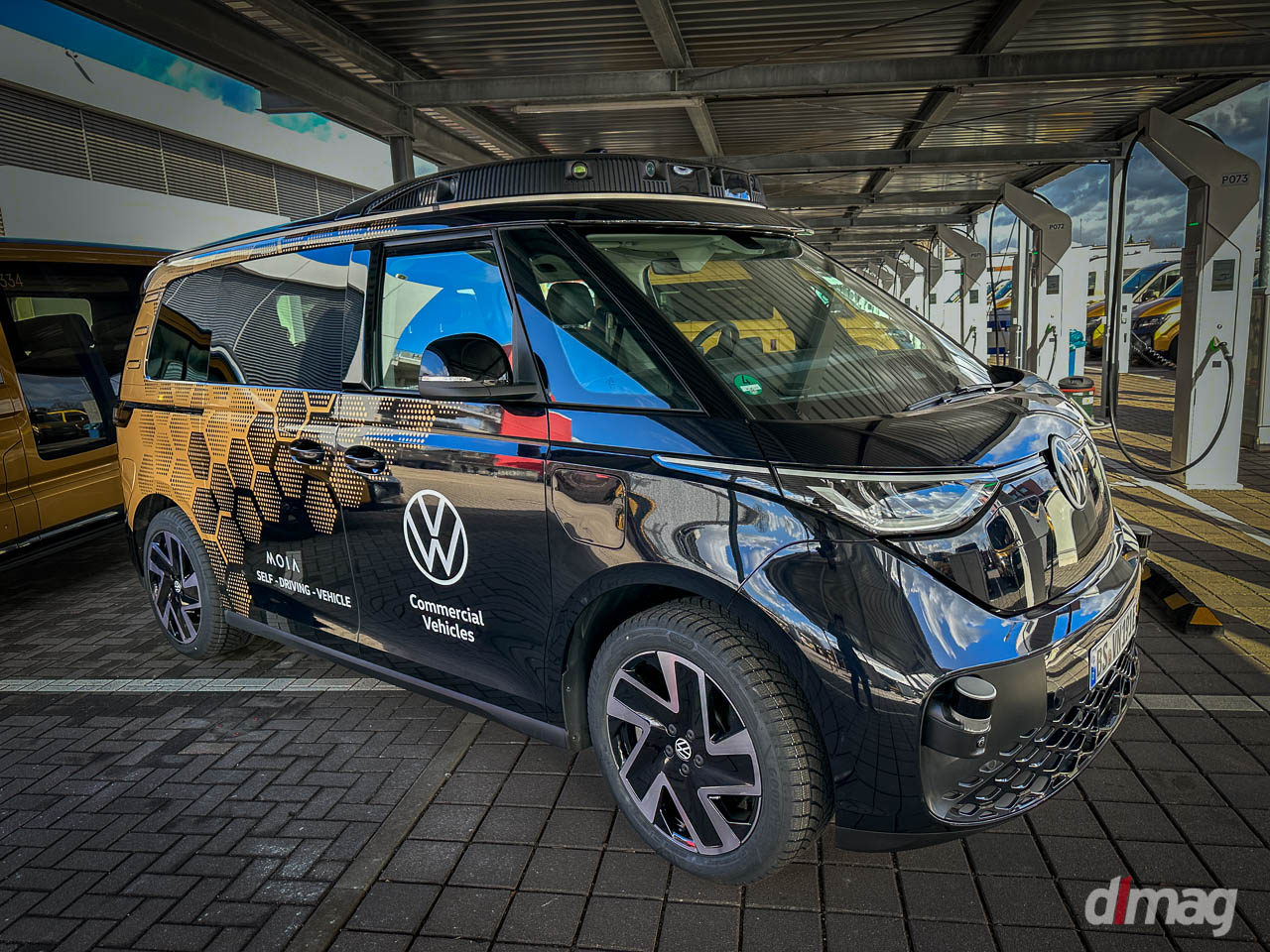
Mobileye’s self-driving system provides the foundation for the vehicle’s autonomous capabilities, working with MOIA’s proprietary Autonomous Driving Mobility-as-a-Service (AD MaaS) platform. This software uses artificial intelligence to manage fleet operations in real-time, coordinate passenger pickups and drop-offs, and integrate with existing ride-hailing applications. The system allows remote monitoring and assistance capabilities, letting human operators provide guidance when the vehicle encounters unusual situations or needs navigation support.

The vehicle achieves SAE Level 4 autonomy, meaning it can operate without human intervention within designated operational areas. This capability matches what Waymo’s Jaguar I-PACE fleet currently provides across multiple U.S. markets, making the ID.Buzz AD a direct competitor in the fully autonomous ride-hailing segment. The autonomous system includes fail-safe protocols that can safely bring the vehicle to a stop if sensors detect problems or system malfunctions.
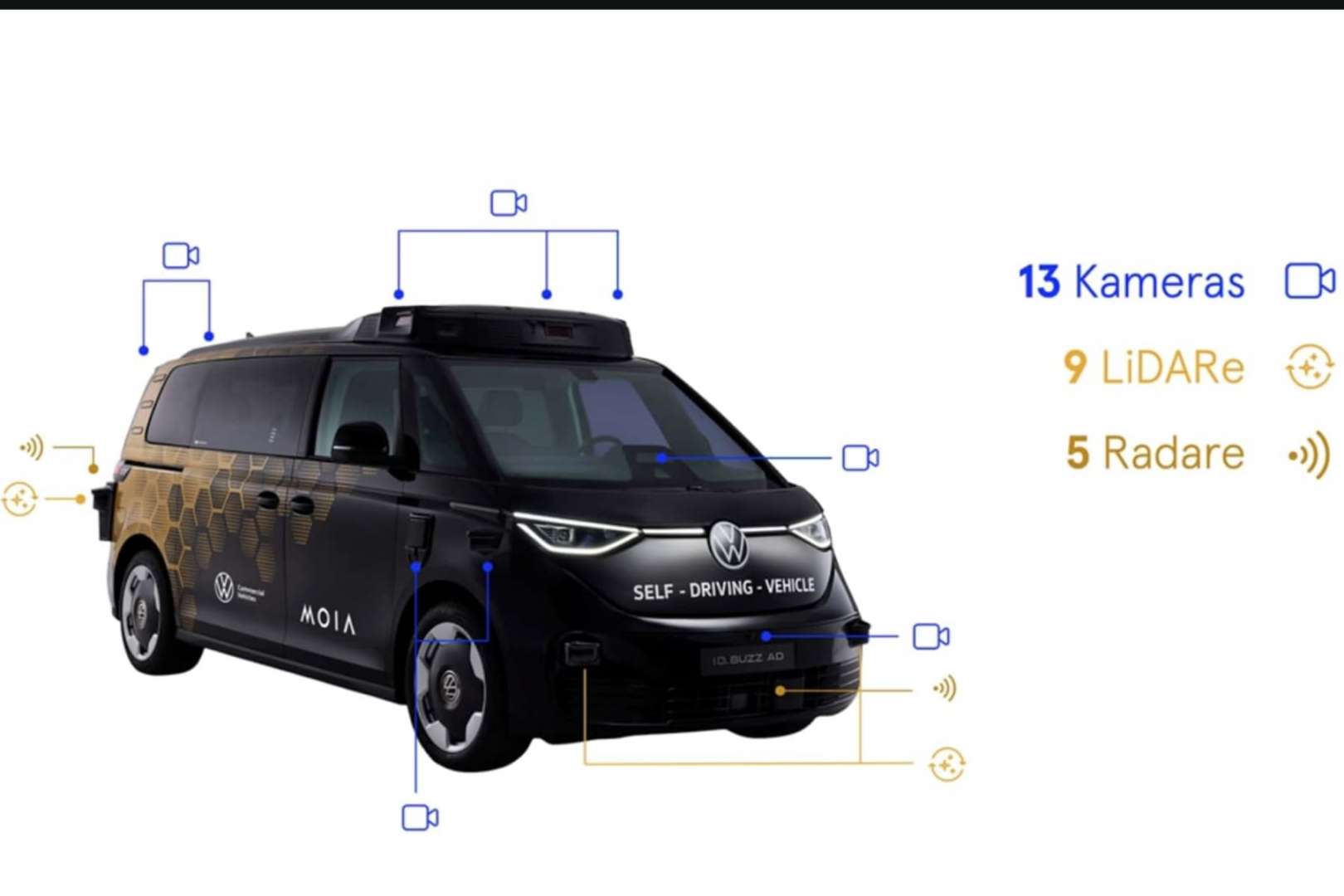
The biggest exterior differences between the standard ID.Buzz and the AD version involve seamlessly integrating these 27 autonomous driving sensors across the vehicle’s body panels. The design team carefully positioned the sensor array to maintain the vehicle’s aesthetic appeal while ensuring optimal performance. The LiDAR units fit into custom-designed housings that blend with the vehicle’s roofline and body panels, avoiding the aftermarket look common in many autonomous vehicle conversions.
Design That Actually Works
The ID.Buzz AD keeps the iconic retro-modern look of its consumer counterpart while adding subtle design changes that signal its autonomous capabilities. The vehicle maintains the distinctive two-tone paint scheme and oversized Volkswagen logo that pay tribute to the original 1960s Microbus, creating immediate visual recognition and emotional connection with passengers. The rounded shape and expansive greenhouse design maximize natural light while providing excellent visibility for both passengers and the vehicle’s sensor systems.
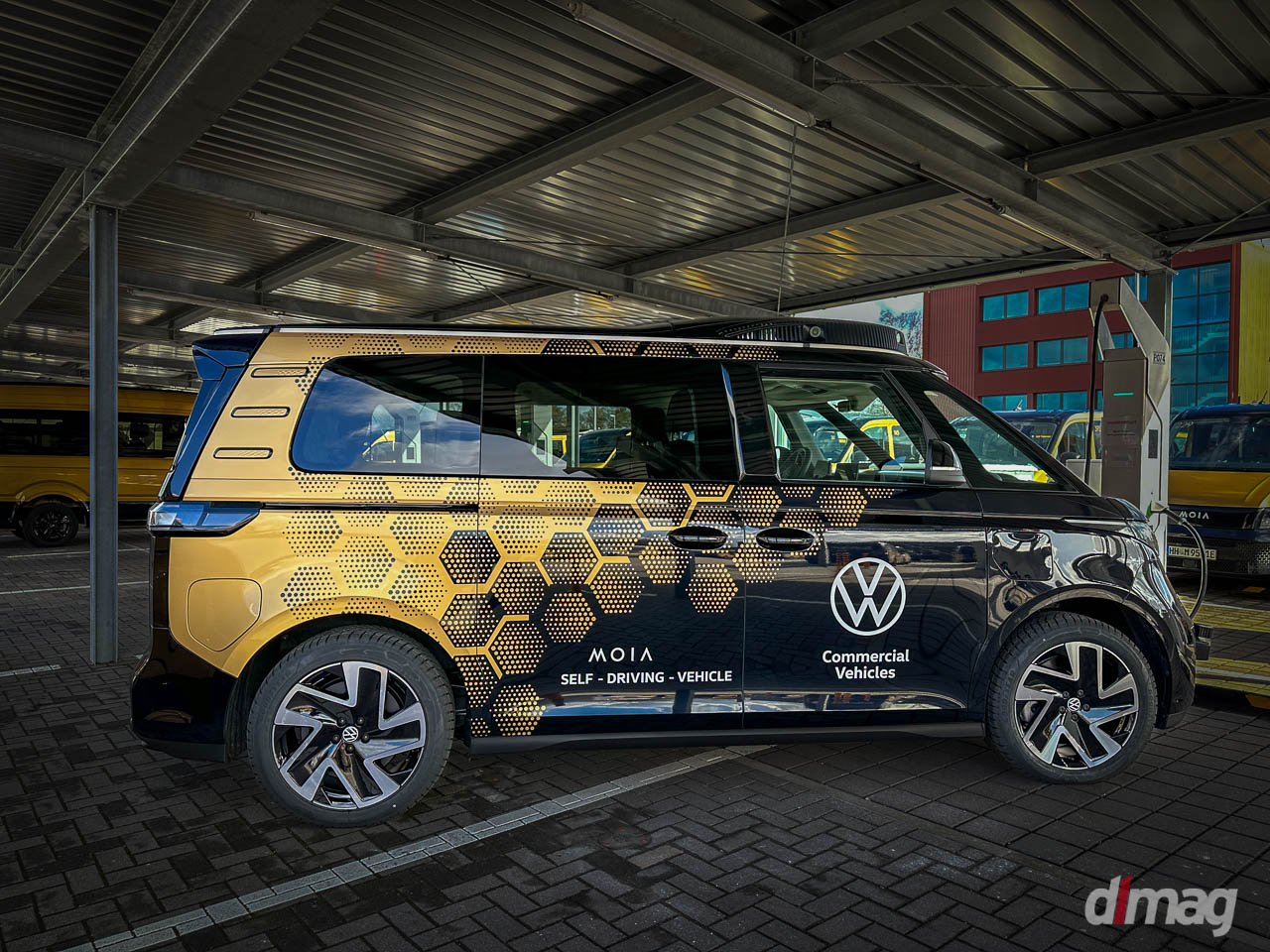
The front end features a closed-off grille design typical of electric vehicles, with integrated LED lighting elements that create a modern take on classic Volkswagen design language. The absence of traditional chrome trim and the use of body-colored panels create a clean, minimalist appearance that reflects the vehicle’s electric powertrain and autonomous technology. Large windows and minimal A-pillars enhance the airy, open feeling that defines the ID.Buzz family while supporting the extensive sensor array required for autonomous operation.


Color options for the AD version focus on professional fleet applications, with subdued tones that maintain visual appeal while projecting reliability and trustworthiness needed for commercial passenger service. The paint schemes avoid overly bright colors that might distract from the vehicle’s serious commercial purpose, instead emphasizing clean lines and color combinations that appeal to diverse passenger demographics. The extended wheelbase and raised roofline create a more substantial visual presence compared to the standard ID.Buzz, while providing the additional interior space required for passenger comfort and sensor hardware.
Exterior lighting systems use advanced LED technology with communication capabilities that allow the vehicle to signal its operational status to pedestrians and other road users. The lighting elements can indicate when the vehicle is in autonomous mode, approaching a pickup location, or experiencing a system alert, enhancing safety through clear visual communication.
Interior Design and Passenger Experience
MOIA has built the ID.Buzz AD interior with multiple layers of passenger safety and comfort features designed for autonomous operation. The four-seat configuration prioritizes individual passenger comfort through ergonomically designed seating that handles extended journey durations common in ride-hailing applications. Each seat has memory foam cushioning with pressure-relieving contours, adjustable lumbar support, and individual armrests with integrated storage compartments. The seats feature antimicrobial fabric treatments and easy-to-clean surfaces that maintain hygiene standards while providing comfort comparable to premium automotive applications.
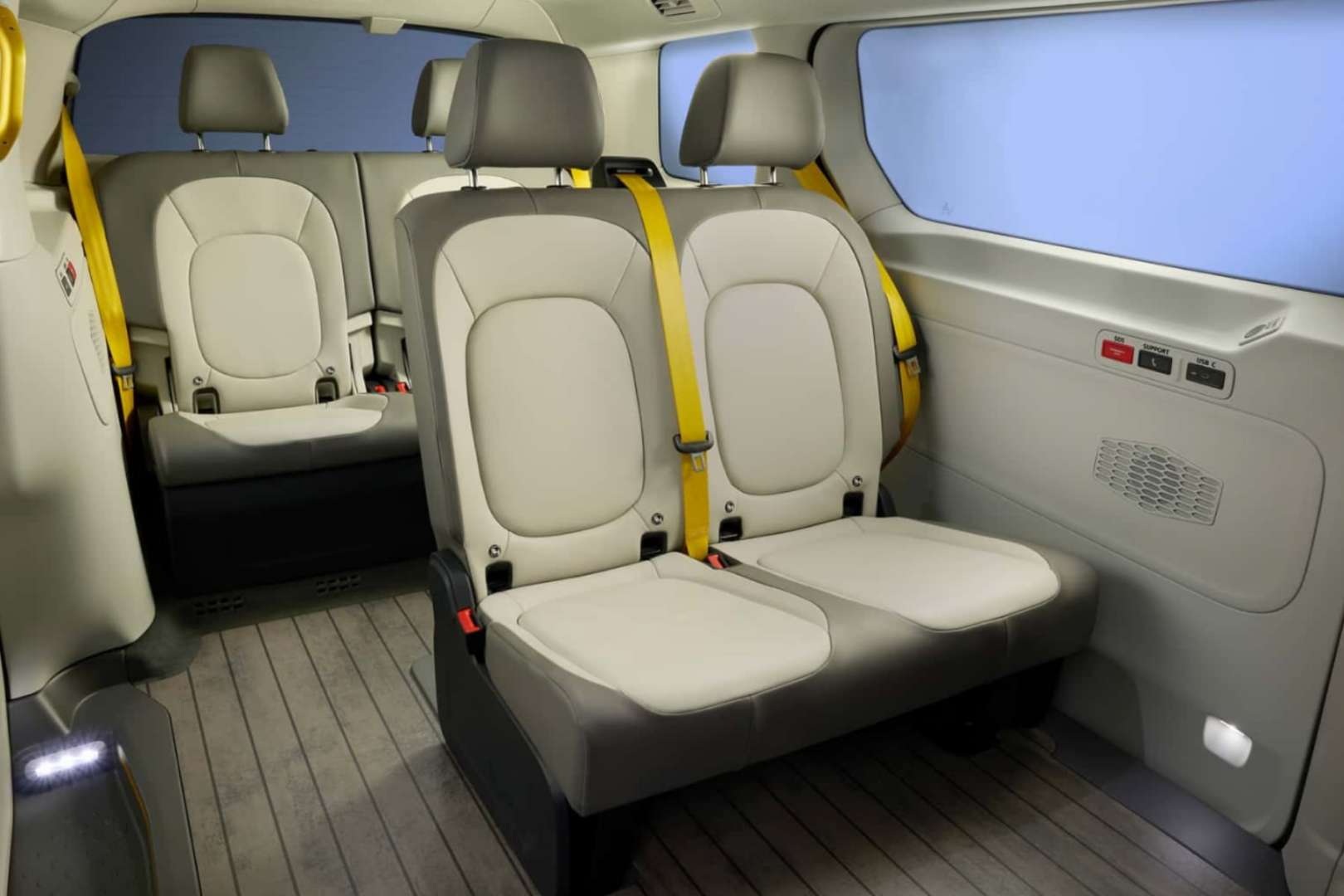
Seating positions are strategically arranged to maximize personal space and minimize passenger interaction when desired, addressing privacy concerns in shared mobility environments. The layout includes generous legroom exceeding industry standards for similar vehicles, with individual footrests and adjustable headrests accommodating passengers of varying heights. Power outlets and wireless charging pads at each seating position enable device connectivity throughout the journey, while individual reading lights and privacy screens enhance the passenger experience.

The vehicle has continuous interior monitoring through strategically positioned cameras that track passenger behavior, detect potential safety issues, and ensure compliance with occupancy regulations. Emergency communication systems provide direct connection to fleet operators and emergency services, with panic buttons accessible from each seating position and automated distress signal capabilities that activate during sudden deceleration or collision events. Advanced biometric sensors can monitor passenger vital signs and detect unusual behavior patterns, automatically triggering response protocols that include contacting emergency services when distress or medical emergencies are detected.

The cabin features advanced air filtration systems with HEPA-grade filters and UV sanitization capabilities, addressing health concerns in shared mobility environments. Climate control operates independently for each seating zone, allowing passengers to customize temperature and airflow while maintaining optimal air quality throughout the journey. Climate-controlled cup holders and personal ventilation systems ensure passenger comfort across varying weather conditions and journey lengths. Sound dampening materials and active noise cancellation technology create a quiet environment that reduces passenger stress and enables clear communication with remote operators when assistance is needed.
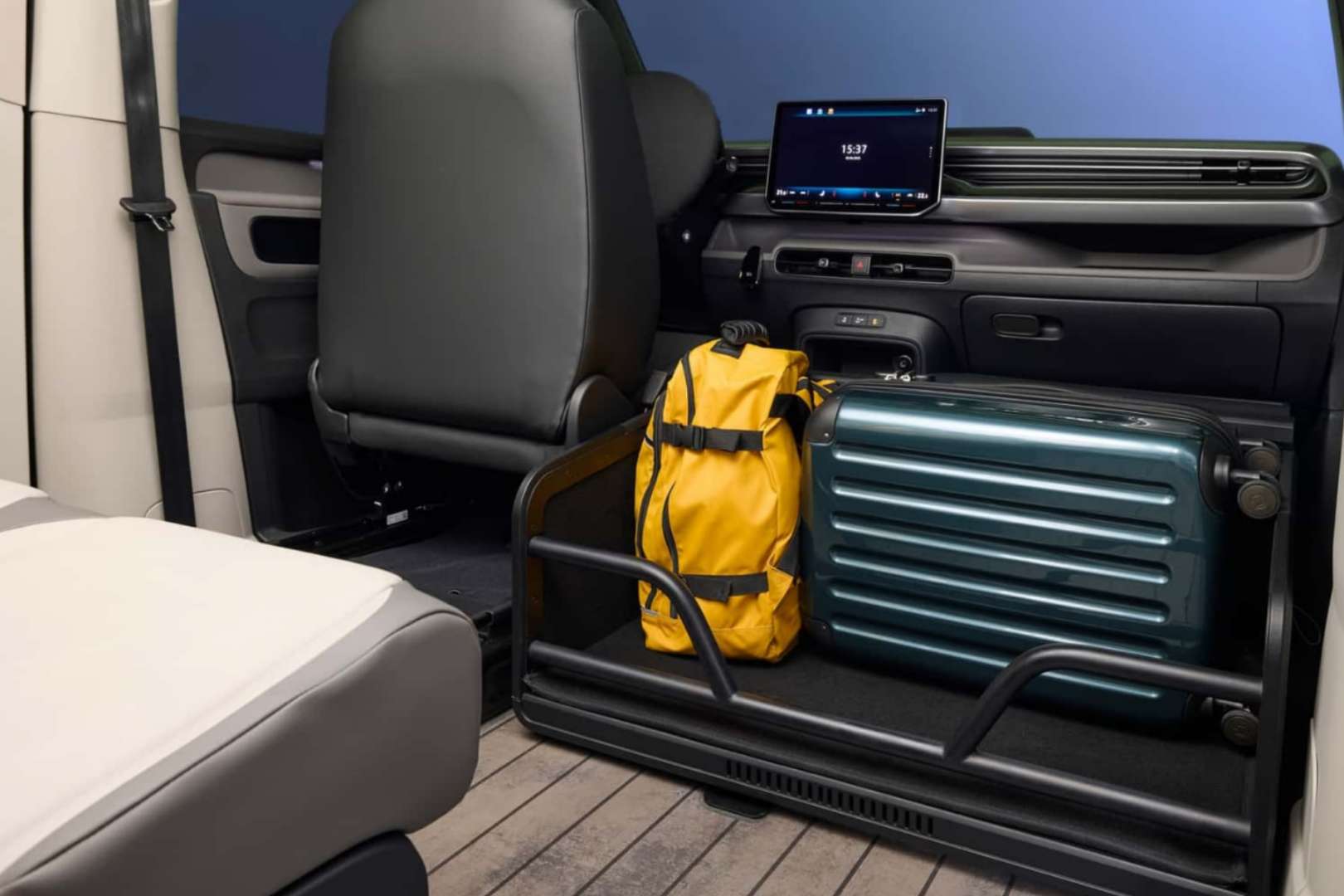
The vehicle’s extended wheelbase and raised roofline create a spacious cabin environment that reduces claustrophobic feelings often associated with autonomous vehicles. Large windows and panoramic glass surfaces provide natural light and exterior visibility, helping passengers maintain spatial awareness during autonomous operation. The interior design uses calming color schemes and soft textures that promote relaxation while maintaining the professional appearance required for commercial service. Structural safety enhancements include reinforced door frames, impact-absorbing seat mounting systems, and strategically placed airbags designed for the vehicle’s unique seating configuration, while smooth interior surfaces and rounded edges minimize contact injuries during sudden stops or collisions.
Commercial Deployment and Market Positioning
The MOIA Turnkey Solution packages the ID.Buzz AD vehicle with comprehensive services including vehicle certification, sensor calibration, software integration, fleet management tools, insurance coverage, and ongoing technical support. This approach enables transportation companies and municipalities to launch autonomous services without developing proprietary technology platforms, differentiating Volkswagen from competitors like Waymo’s vertically integrated model and Tesla’s proprietary approach.
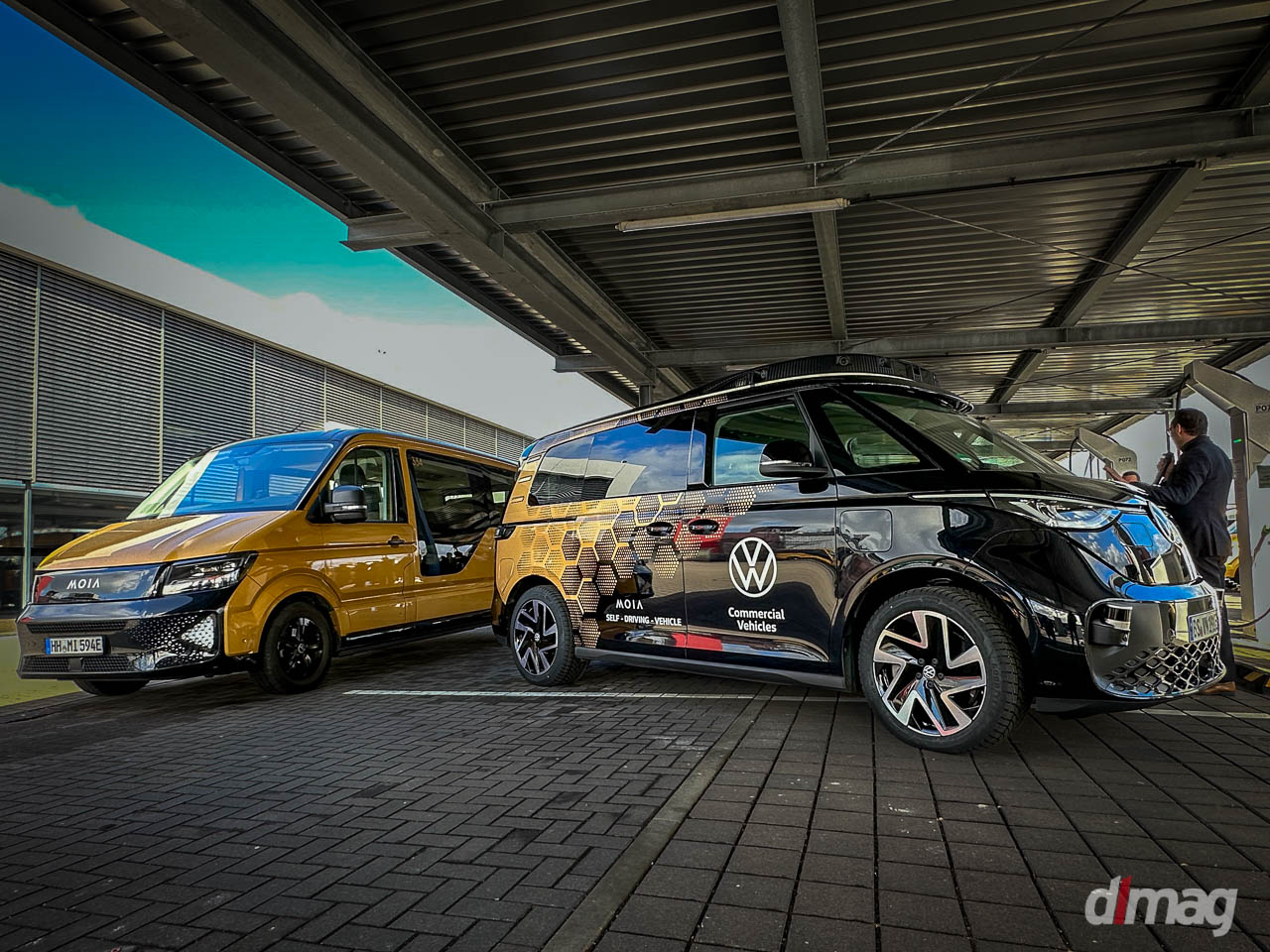
Uber has committed to integrating thousands of ID.Buzz AD vehicles into its platform over the next decade, beginning with Los Angeles deployment in 2026. This partnership provides immediate market access and operational scale while extending beyond vehicle supply to include joint development of fleet management protocols. European deployment starts in Hamburg, where MOIA currently operates conventional ridepooling services, before expanding to additional German cities and broader European markets.
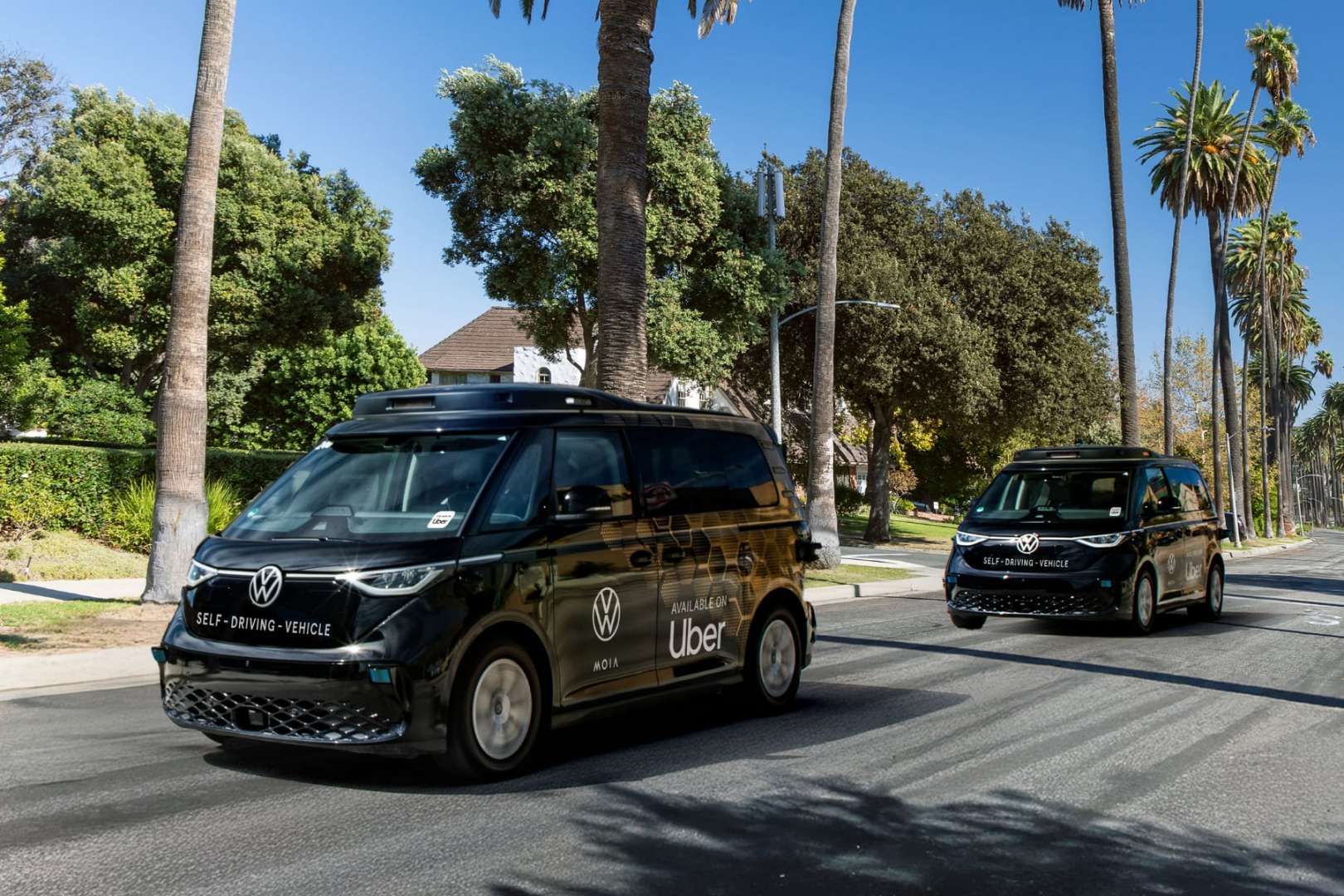
The ID.Buzz AD achieves Level 4 autonomous capability, representing the first vehicle in Germany to reach this threshold for series production. While Volkswagen hopes to gain full regulatory approval for driverless operation by end of 2026, current regulations still require safety drivers. Tesla’s Cybercab remains in development with production targeted before 2027, while Waymo continues using modified Jaguar I-PACE vehicles. This timing positions Volkswagen to capture early market opportunities across both European and U.S. markets.
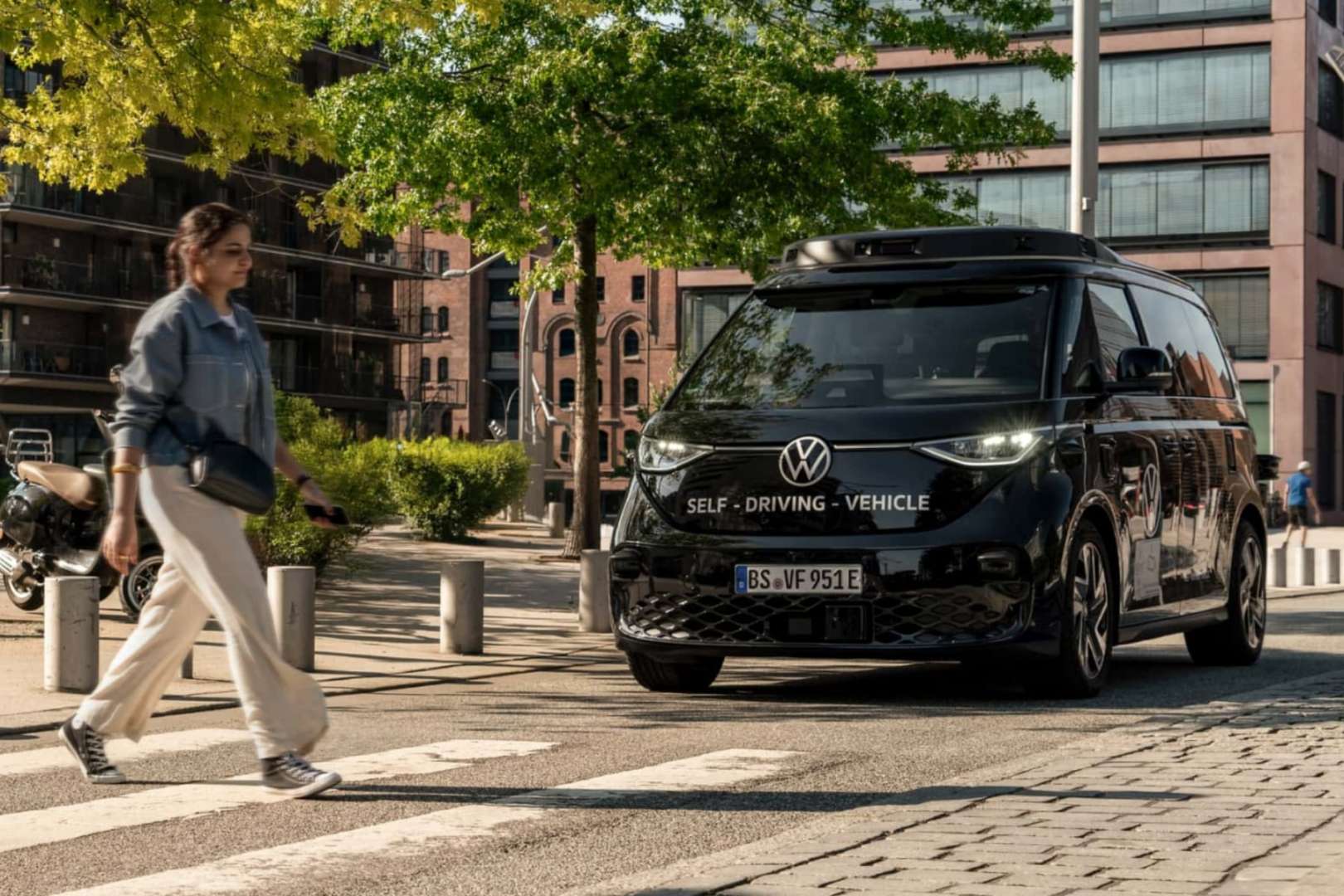
MOIA’s software platform enables multiple operators to deploy autonomous fleets using the same technology foundation, potentially accelerating market adoption by reducing barriers to entry. The strategy positions Volkswagen as a technology supplier rather than direct service provider, enabling broader market penetration. Fleet operators receive comprehensive training covering vehicle operation, maintenance protocols, and emergency response procedures, while performance monitoring systems track utilization, passenger satisfaction, and operational efficiency.
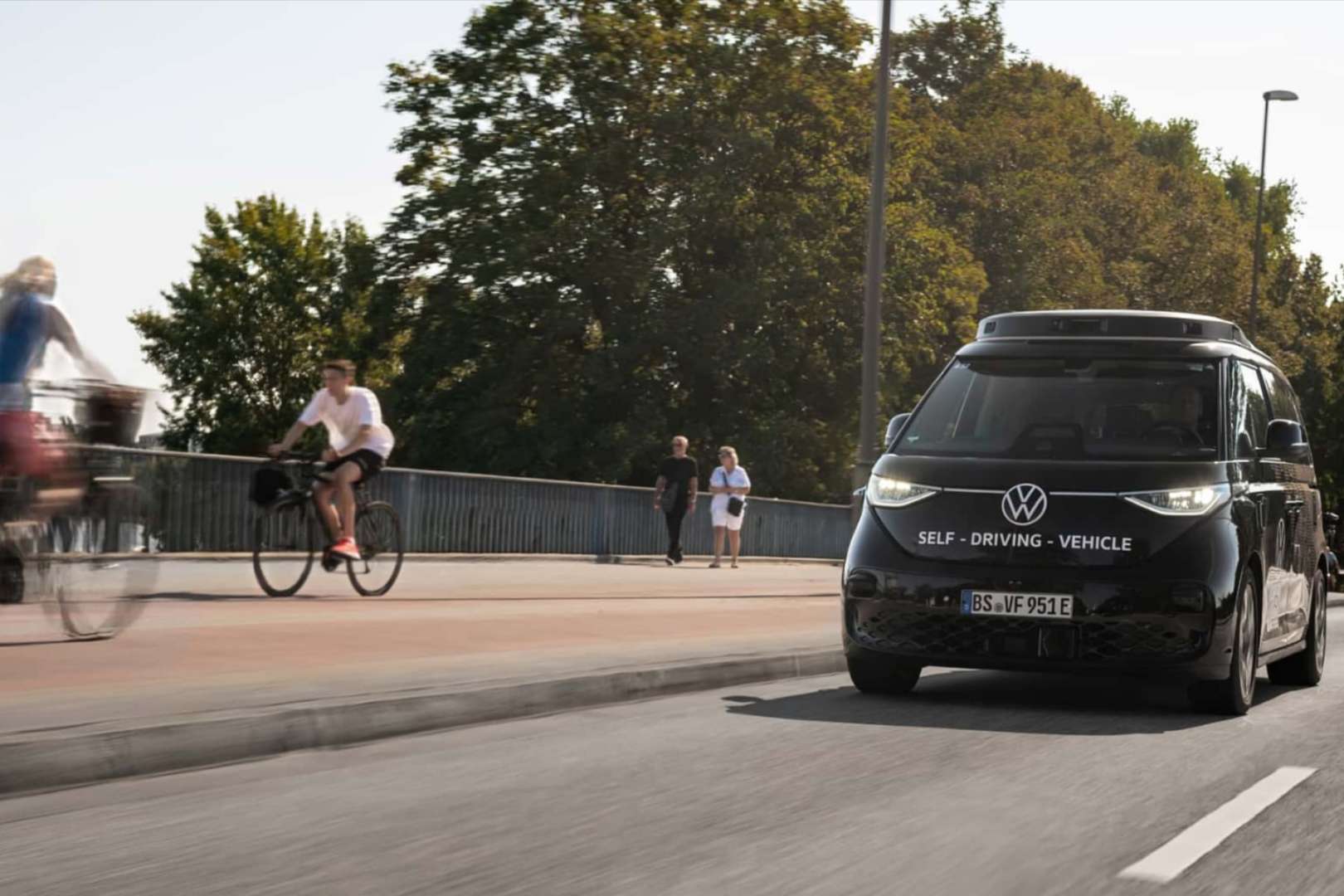
The company hasn’t disclosed pricing for the ID.Buzz AD, though industry estimates suggest costs comparable to other modified autonomous vehicles exceeding $100,000 per unit. Volkswagen’s manufacturing scale and established service network provide potential advantages for competitive pricing and fleet support, particularly for large orders requiring ongoing maintenance and software updates to keep deployed fleets current with latest autonomous driving capabilities.

